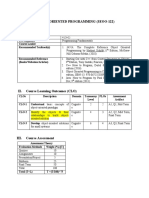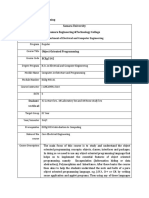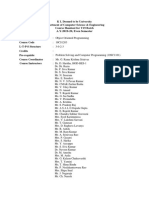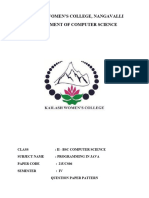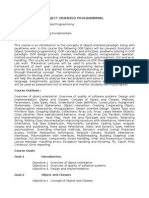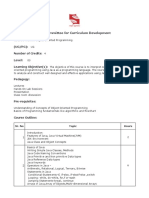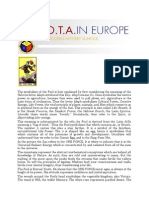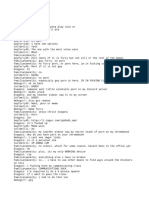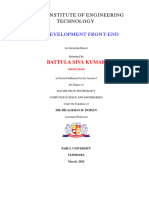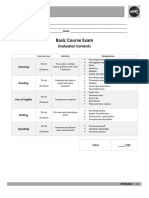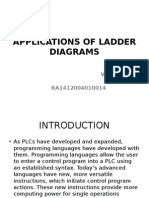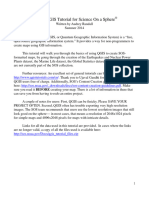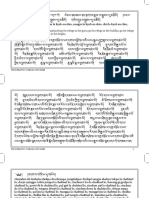0% found this document useful (0 votes)
22 views2 pagesOOP Course for 2nd Year CS Students
The document outlines the course structure for Object Oriented Programming (CoSc2051) at Woldia University, detailing learning outcomes, course contents, assessment methods, and required textbooks. Students will learn fundamental OOP concepts, Java programming, and various programming paradigms over the course duration. The assessment breakdown includes quizzes, lab projects, a mid-exam, and a final exam, with a total of 5 credit points awarded for the course.
Uploaded by
semagnCopyright
© © All Rights Reserved
We take content rights seriously. If you suspect this is your content, claim it here.
Available Formats
Download as PDF, TXT or read online on Scribd
0% found this document useful (0 votes)
22 views2 pagesOOP Course for 2nd Year CS Students
The document outlines the course structure for Object Oriented Programming (CoSc2051) at Woldia University, detailing learning outcomes, course contents, assessment methods, and required textbooks. Students will learn fundamental OOP concepts, Java programming, and various programming paradigms over the course duration. The assessment breakdown includes quizzes, lab projects, a mid-exam, and a final exam, with a total of 5 credit points awarded for the course.
Uploaded by
semagnCopyright
© © All Rights Reserved
We take content rights seriously. If you suspect this is your content, claim it here.
Available Formats
Download as PDF, TXT or read online on Scribd
/ 2




